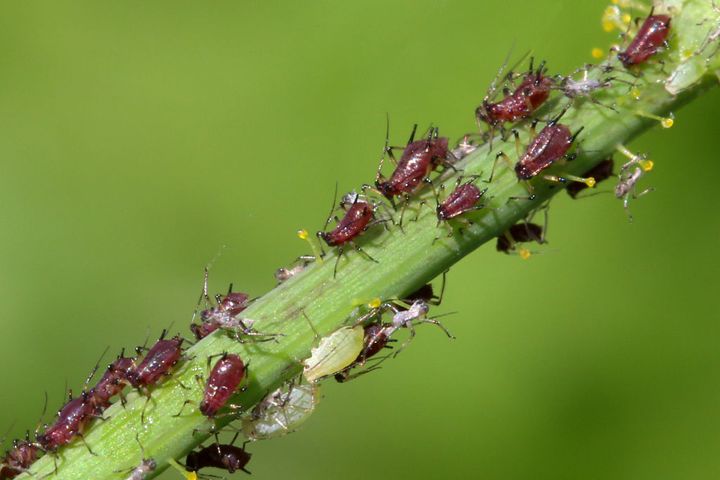
The life of a gardener is not a burdenless one. Between pests, tricky weather, and uncooperative plants, it can feel impossible to get every single aspect of your garden perfect at the same time.
And now that we’re coming into harvesting season, the ravages of birds, slugs, and other critters can become especially apparent on your fruits and veggies. Everything from yellowing grass to extra crows can prove the existence of plant-munching presences in your lawn ― and now, it seems that yellowing veggie leaves can signal the existence of damaging cabbage aphids.
Their numbers rise as we enter late summer and early autumn, and they can have a devastating effect on your brassicas (like cabbage, broccoli, and cauliflower). Including, of course, leaving yellowish-white patches on your veggie leaves (which is especially undesirable on veggies like kale).
Here’s how the bugs can harm your plants, how to spot them, and what (if anything) to do if you do notice the species:
Aphids are sap-suckers
The Royal Horticultural Society (RHS) shared that the mealy cabbage aphid, as with all aphids, suck the sap from plants to survive. “On young plants, the foliage develops in a distorted manner and the growing point may be killed,” they add.
While aphids can feast on a wide range of plants, the mealy cabbage aphids “is only found on cabbages and other brassicas,” the RHS shared. While they mostly eat veggies in the brassica family and ornamental brasssicas, they’ll also chow down on related wild plants, like charlock and shepherd’s purse.
With that said, aphids are a vital part of the ecosystem and can exist peacefully in your lawn. “On older established plants this aphid can usually be tolerated and is a food source for many other invertebrates,” the RHS says. Control is likely only needed for extreme infestations or when the aphids are on young plants or more delicate kale.
How can I spot them?
“On first appearances[,] this insect may be confused with cabbage whitefly. However, mealy cabbage aphid does not fly up in a white cloud when disturbed,” the RHS shared.
They add that extra signs of an infestation include dense colonies of greyish-white aphids under affected leaves, measuring up to 2.5 mm in length; a whitish-yellow discolouration on the leaves at the spots where they feed; and distorted, twisted growth among young plants.
How (and when) should I control the aphids?
As we’ve said before, though the aphids can be a little unpleasant to look at, they might not be hurting your veggies at all if the plants are mature. Kale is a notable exception.
The RHS suggests that you “Encourage aphid predators in the garden, such as ladybirds, ground beetles, hoverflies, parasitoid wasps and earwigs.” These work as natural predators for aphids, and also encourage a “more, not less” attitude to backyard wildlife which can be incredibly beneficial.
They also say you can manually squash colonies between your thumb and forefinger if needed, adding that you should “Dispose of old brassica plants once they have finished cropping to reduce the risk of the next season’s plants becoming affected.”
Overall, though, while these crawlies are VERY creepy, they may not harm your lawn ― or your homegrown roast dinners.